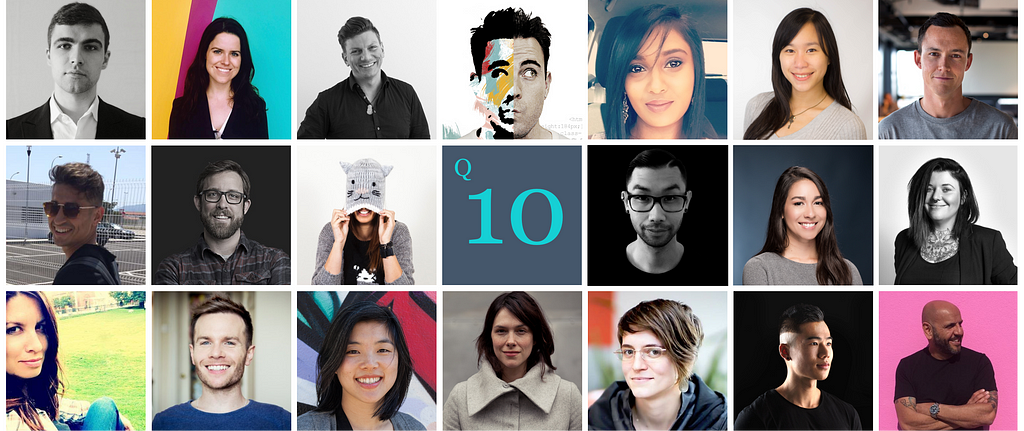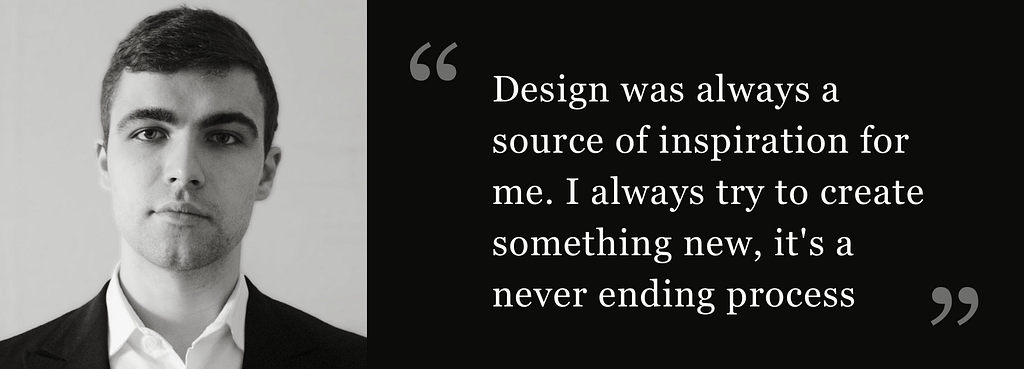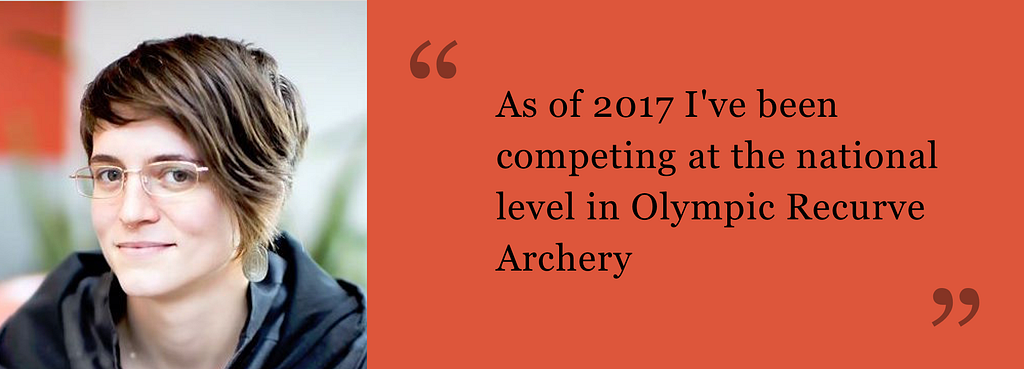Build Design Systems With Penpot Components
Penpot's new component system for building scalable design systems, emphasizing designer-developer collaboration.

UX Planet — Medium | Guy Ligertwood

Learn From twenty experienced designers as we go deep into one question every week.
Intro Article: Get to know the designers
Question 1: How did you get into design?
Question 2: How your typical work day?
Question 3:What things you wish you knew when you started in design?
Question 4: What are the best ways for you to stay inspired?
Question 5: What do you want to see in my UX design portfolio?
Question 6: 5 important questions you need to be able to answer in the UX interview
Question 7: 5 design books every UX designer should read
Question 8: Imposter syndrome: Your experience with it as a designer and tips to manage it
Question 9: 5 non designer books every UX designer should read
Question 10: (you’re here) What’s the best design advice you’ve ever received?
“A designer’s goal has to be to dig below the surface, uncover that emotional resistance, and work hard to address it” . (Ben)
“Don’t fall in love with your design” (Kylie)

(*Since we started the series Simon has moved from Medium to Google to work on Google News)
Australian 🇦🇺
“Always start at the end with the story you want to tell”
simonpan.com or on twitter

(*Since we started the series Stephanie has moved from Facebook to Cruise Automation to work on self driving cars)
American 🇺🇸
“Focus on solving problems; let other people scope them”
American 🇺🇸

Formerly Product Design Manager at Google, Mountain View
Australian 🇦🇺
“Good designers copy. Great designers steal.” (Picasso)
He was right. We are all standing on the shoulders of giants. Everything we make is taking influence from something that has come before. Nothing is truly new. Nothing is created from scratch.
How do you design a new knife without it taking influence from every knife that ever came before, right back to the first blade made out of a flint stone too?
Everything is an augmentation of what already was. Once I accepted that as a designer, I felt a huge sense of relief and freedom wash over me, and I was able to relax just long enough to do some pretty cool stuff.
My website or on Medium

(*Since we started the series Nirissa has moved from Standard Bank in South Africa to Product Designer at Majid Al Futtaim in Dubai)
South African 🇿🇦
I came across this quote early on in my career and it has been on the first page of my portfolio ever since:
“To find a career to which you are adapted by nature, and then to work hard at it, is about as near to a formula for success and happiness as the world provides. One of the fortunate aspects of this formula is that, granted the right career has been found, the hard work takes care of itself. Then hard work is not hard work at all.”
My Linkedin

Australian 🇦🇺
“It’s not really specific to design, but I was once told not to take work too seriously as I’d miss all the fun. “
I’ve always been really passionate about design and work is quite important to me. I’ve put a lot of pressure on myself over the years to produce the best design work I’m capable of, and while it has pushed me to progress I don’t think the pressure and anxiety I created was necessary or helpful.
Removing the pressure and anxiety actually clears your mind and allows you to focus on work more clearly and get more done in less time while also enjoying the journey.
“I’m still working on it, but if you find yourself getting too serious with your latest design project, take a step back and remember to enjoy the process.”

American 🇺🇸
“Go where the fear is” (Nancy Dickenson)
Emotion is powerful. Designers can have massive impact when we’re able to reduce fear or anxiety for a user — or better yet — replace it with trust, comfort, even joy.
The challenge is that people are rarely able to articulate their emotional connection to a problem. Instead, their frustration shows up at the surface level: flows, buttons, etc. If a problem seems tough or murky, odds are there’s more to it than you think.
Simplifying a checkout flow won’t help much if the user is afraid they’re making a bad purchase.
“A designer’s goal has to be to dig below the surface, uncover that emotional resistance, and work hard to address it.”
hugg.in or I’m @bhuggins on Twitter and Instagram

Australian 🇦🇺
It’s not exactly advice, but I learnt a lot from it.
“A boss once told me he’d never seen me do anything ‘creative’. What he thought I lacked in creativity, I made up for in courage — I quit on the spot.”
Bad leaders are the best teachers, and he taught me about the type of person I didn’t want to be, and the type of person I was determined to become.
My Linkedin

American 🇺🇸
“Don’t be afraid to reinvent. In fact, consider it a challenge”
My Twitter

Russian 🇷🇺
“Learn to ask questions”
and
“Listening isn’t just to listen without talking, It’s all about hearing what the person is saying”
I received this advice from my father. The beauty of this advice is that they’re applicable for almost any circumstance (whether for the work or for daily situations).

Nationality: Peruvian 🇵🇪
“50% of a designers job is communication”
I’d say it’s actually more like 80%. Communicating with peers, cross-functionally, and with leadership is crucial. Communication includes the range from progress updates and tactical decisions to big ideas and vision for the future.

Canadian 🇨🇦
“Best advice: Don’t make it personal”
My Linkedin

Italian 🇮🇹
“Have no fear of perfection, you’ll never reach it” (Salvador Dali)
My Linkedin

American 🇺🇸
“Thinking time is invaluable”
I tend to spend the first 30 minutes of any challenge staring at a piece of paper and scribbling notes. One of my first mentors, Lane Becker, encouraged me to take this time to really think through what I know and don’t know about a problem space before I jump into any solutions. If you know the problems well, the solutions come more easily.

British 🇬🇧 and recently Australian 🇦🇺
“Use real data”
My Design Director at Skype taught me the importance of not only using real photos and content in my concepts, but also to make sure numbers and maths was correct too. Designing as close to reality helps avoid a lot of the dead ends you find yourself in when designing for best-case scenarios.
My work at buzzusborne.com, my Twitter, my writing on Medium and my resume on Linkedin

Australian 🇦🇺
I haven’t received any design specific advice that immediately comes to mind when I’m asked this question.
What does come to mind is something I read once:
“Don’t fall in love with your design”
I find this advice helpful to keep front of mind at all times. It allows me to be open and empathetic by disarming my ego and reminding me who I am designing for: not myself. It transforms something loveable and mediocre into something great (that could also be as equally loveable!).
My Twitter and also on my Dribbble for haphazardly timed insights into my work.

British 🇬🇧
“You have to do what you care about and connect with … because otherwise you won’t see it through.”
I like this advice because when I look back at things I’ve done well on, it’s always been because I enjoyed the process as much as the outcome.
It’s easy to trap yourself into working on something because it’s trending (e.g. bitcoin), or join a company because the name is popular and prestigious (e.g. Google/Apple). This type of thing can distract you from what you really want to do, so I find this a good question to come back to before committing to something that will claim your soul.
My Twitter

Taiwanese 🇹🇼
“Lead at every level”
…is one of the great advices I’ve ever received, though I forgot where it came from. I used to think that leadership only matters for people in higher management roles. However, the longer I became a designer, the more I see the fallacy in this thought.
A product designer (or interaction designer or UX designer) is essentially the “design lead” of a project overseeing the design process. This role also requires close collaboration with cross-functional peers (PM, engineers, writer…) or clients to co-shape the product vision.
The leadership could be demonstrated anywhere from “aligning visuals with the broad ecosystem” to “proactively bringing in user insights” to “driving and clearly communicating new products or features to the team and stakeholders”.
“People tend to look for high-impact things to do to have an impact, but sometimes impacts can just compound organically when you think and behave like the leader disregarding how small the task is and what level you are at.”
My Medium
“50% of a designers job is communication”(Paola)
Read the other articles in this series
Intro Article: Get to know the designers
Question 1: How did you get into design?
Question 2: How your typical work day?
Question 3:What things you wish you knew when you started in design?
Question 4: What are the best ways for you to stay inspired?
Question 5: What do you want to see in my UX design portfolio?
Question 6: 5 important questions you need to be able to answer in the UX interview?
Question 7: 5 design books every UX designer should read
Question 8: Imposter syndrome: Your experience with it as a designer and tips to manage it
Question 9: 5 non designer books every UX designer should read
Question 10: (you’re here) What’s the best design advice you’ve ever received?
Clap 👏 👏 👏 if you enjoyed this article, so others can find it
Comment 💬 if you have a question you’d like to ask the designers
Follow me Guy Ligertwood to read all the articles in the series
What’s The Best Design Advice You’ve Ever Received? was originally published in UX Planet on Medium, where people are continuing the conversation by highlighting and responding to this story.
AI-driven updates, curated by humans and hand-edited for the Prototypr community